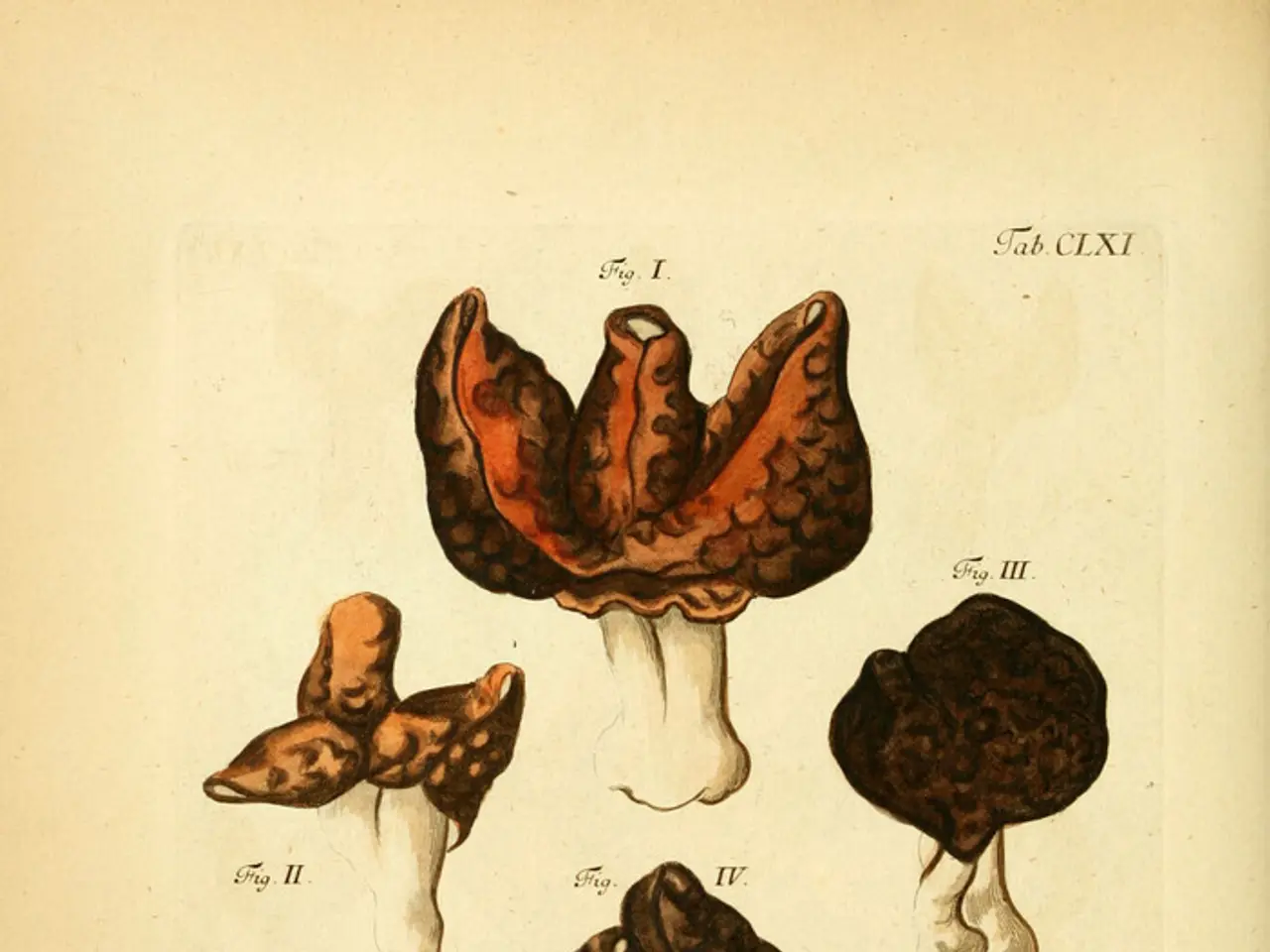Self-replicating underground plant species identified
Jerusalem artichokes, also known as sunchokes, are a unique plant that has gained popularity for its versatile culinary uses and distinctive flavour. However, they require special attention when it comes to storage and digestion due to their high fructose content.
Storing Sunchokes
To properly store sunchokes, keep the tubers in a high humidity environment near 32°F (0°C), such as a root cellar or ventilated refrigerator drawer. Stored this way, they can last for several months. Before storage, scrub them with a vegetable brush but there is no need to peel them. Using a closed container or plastic bag with a paper towel can help manage moisture during storage [1][4].
Digesting Sunchokes
Sunchokes contain a high amount of inulin, a type of fructan (a carbohydrate made of fructose units). This can cause gas, bloating, or discomfort in some people. To better digest sunchokes:
- Introduce them gradually into your diet to allow your gut flora to adapt.
- Cook sunchokes well, as cooking can help break down some of the inulin.
- Eat smaller portions initially.
- Drinking plenty of water with the meal may also aid digestion.
Because the fructose chains in inulin are not absorbed quickly, sunchokes do not cause a rapid rise in blood sugar but can ferment in the large intestine, leading to potential digestive symptoms [3].
Harvesting and Culinary Uses
Sunchokes can potentially 'take over' if left unchecked. If one sunchoke tuber is left in the ground, it will produce offspring. In no-till conditions, sunchoke requires only the placement of tubers on the soil surface under a layer of compost. Sunchoke can grow over three meters tall and may fall over in the wind if not staked.
Up to 6.5 kilograms of food can be harvested from one sunchoke plant with minimal effort. Sunchoke can be fried, baked, boiled in soups, and added to salads. Culinarily, sunchoke resembles potatoes but has a sweeter, nutty flavor.
Sunchokes have small yellow flowers in summer and edible tubers in winter. If left washed sunchoke tubers in a cool place for a month, it can help soften the polysaccharide. Fermentation of sunchoke tubers can make them easier to digest. This can be done by slicing them thinly, salting them like sauerkraut, adding a little sugar and onion, and allowing them to ferment for 5 weeks. The result of fermented sunchoke is an aromatic snack.
It's essential to note that sunchoke shares no commonalities with artichokes and is more closely related to sunflowers than to cabbage. New shoots emerge from the tubers in spring, and for planting, smooth tubers (not necessarily large ones) are suitable.
In conclusion, store sunchokes in cool, humid conditions near freezing without peeling, and digest them gradually and cooked to minimize discomfort from their high inulin (fructose polymer) content. Enjoy the unique flavour and versatility of this fascinating plant!
[1] Root Cellaring: Natural Cold Storage of Fruits & Vegetables, Third Edition. [2] The Complete Guide to Pickling, Fermenting, and Preserving: Over 120 Recipes for the Home Preserver. [3] The Complete Low-FODMAP Diet, Second Edition. [4] The Vegetarian Flavor Bible: The Essential Guide to Culinary Creativity.
- Storing sunchokes in a root cellar or ventilated refrigerator drawer, which maintains their high humidity and low temperature, can help prolong their life for several months, ensuring a sustainable supply for your home-and-garden lifestyle.
- To enjoy the unique flavor of sunchokes without experiencing digestive discomfort, it's recommended to gradually introduce them into your lifestyle, cook them well, and eat them in moderation, following these food practices for a more enjoyable lifestyle with minimal health issues.




